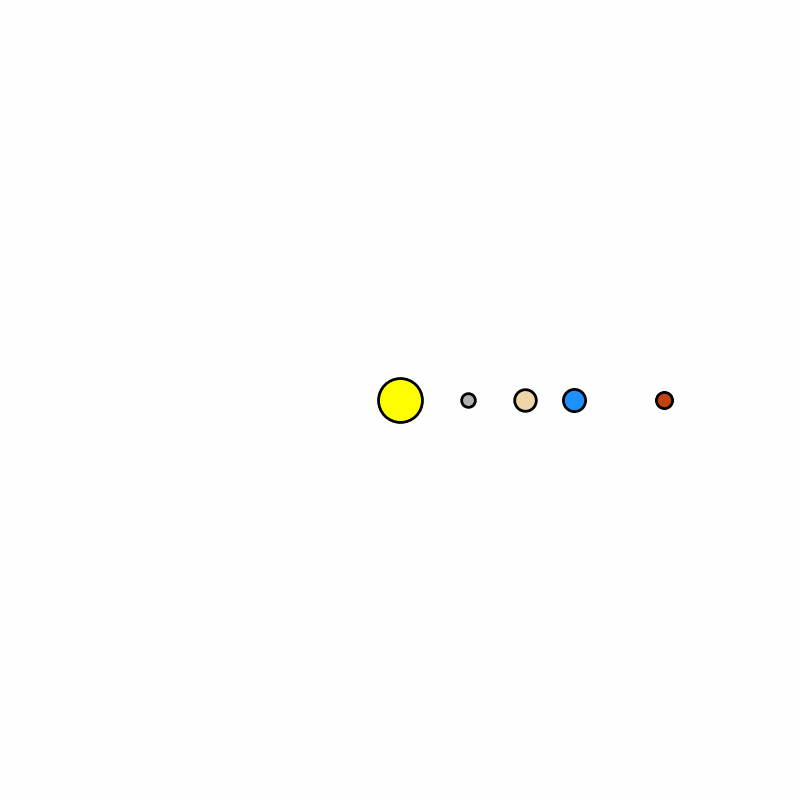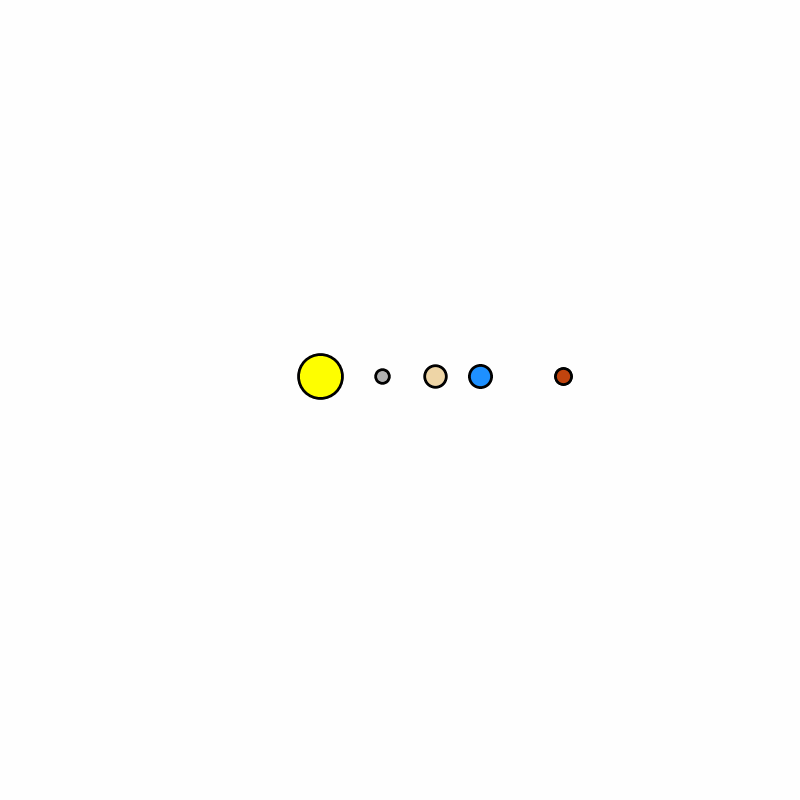What goes around comes around
Imagine looking at a simplified drawing of our solar system. The Sun is in the center, and Mercury, Venus, Earth, and Mars orbit around it in circles. For the illustrations below, we omit Jupiter, Saturn, Uranus, and Neptune.

Let us change our perspective to the planet Earth. From here, the planet trajectories look very different. The paths of Mercury, Venus, and Mars show a more complicated pattern. What previously appeared as circular trajectories now appears as a loopy ones.

It is remarkable how this simple system can become so complicated when viewed from a different angle. This shift in perspective shows just how difficult it must have been to interpret the observable trajectories of planets within our solar system.
Materials
The code is available here.
Literature
[1] Royal Museums Greenwich. The orbits of the planets. Link.
[2] National Aeronautics and Space Administration. The solar system: Planet sizes. Link.
Institute of
Environmental Systems Sciences
Merangasse 18,
8010 Graz
Environmental Systems Sciences
Merangasse 18,
8010 Graz
daniel.reisinger@uni-graz.at